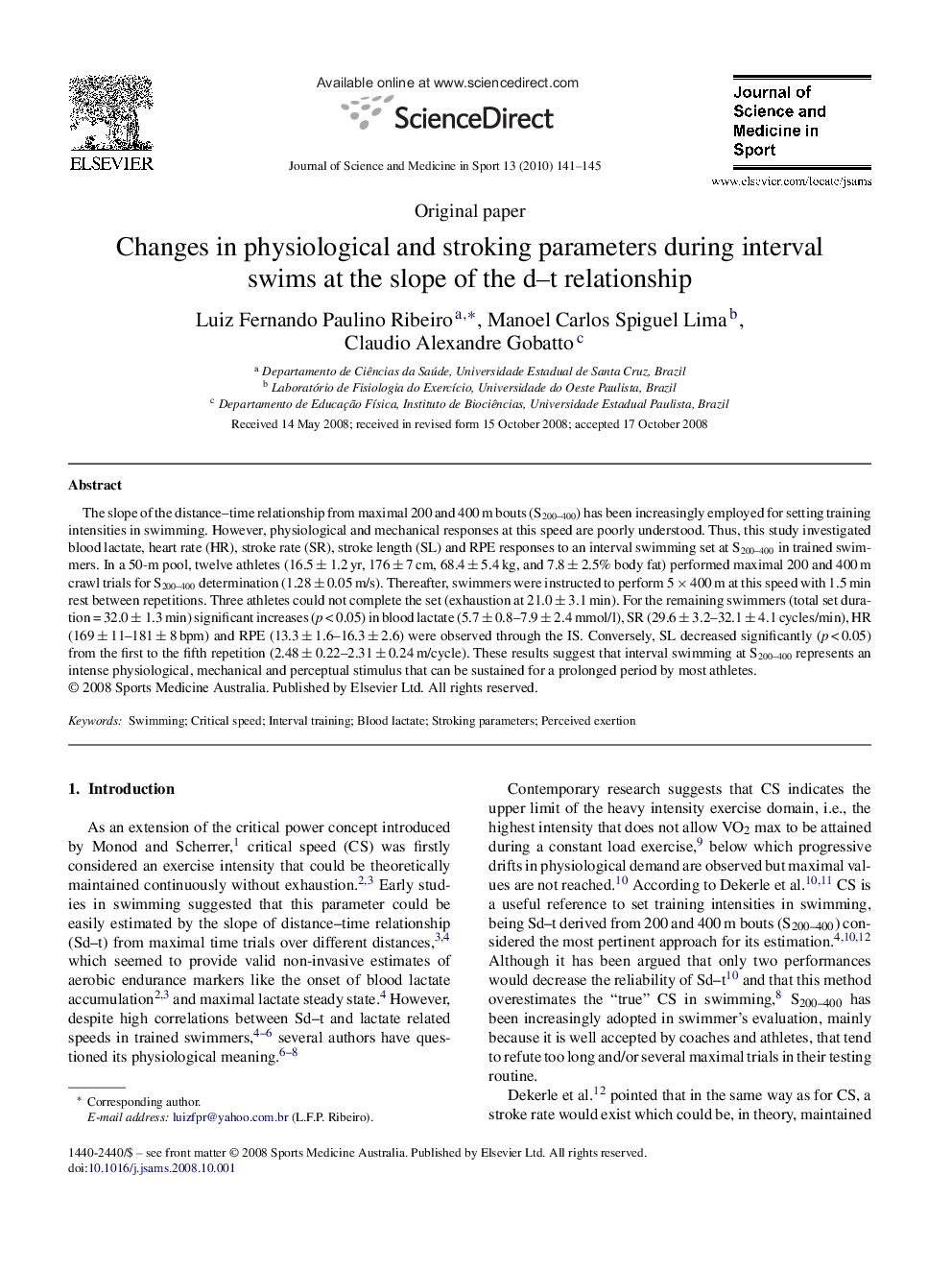| Article ID | Journal | Published Year | Pages | File Type |
|---|---|---|---|---|
| 2704850 | Journal of Science and Medicine in Sport | 2010 | 5 Pages |
The slope of the distance–time relationship from maximal 200 and 400 m bouts (S200–400) has been increasingly employed for setting training intensities in swimming. However, physiological and mechanical responses at this speed are poorly understood. Thus, this study investigated blood lactate, heart rate (HR), stroke rate (SR), stroke length (SL) and RPE responses to an interval swimming set at S200–400 in trained swimmers. In a 50-m pool, twelve athletes (16.5 ± 1.2 yr, 176 ± 7 cm, 68.4 ± 5.4 kg, and 7.8 ± 2.5% body fat) performed maximal 200 and 400 m crawl trials for S200–400 determination (1.28 ± 0.05 m/s). Thereafter, swimmers were instructed to perform 5 × 400 m at this speed with 1.5 min rest between repetitions. Three athletes could not complete the set (exhaustion at 21.0 ± 3.1 min). For the remaining swimmers (total set duration = 32.0 ± 1.3 min) significant increases (p < 0.05) in blood lactate (5.7 ± 0.8–7.9 ± 2.4 mmol/l), SR (29.6 ± 3.2–32.1 ± 4.1 cycles/min), HR (169 ± 11–181 ± 8 bpm) and RPE (13.3 ± 1.6–16.3 ± 2.6) were observed through the IS. Conversely, SL decreased significantly (p < 0.05) from the first to the fifth repetition (2.48 ± 0.22–2.31 ± 0.24 m/cycle). These results suggest that interval swimming at S200–400 represents an intense physiological, mechanical and perceptual stimulus that can be sustained for a prolonged period by most athletes.
